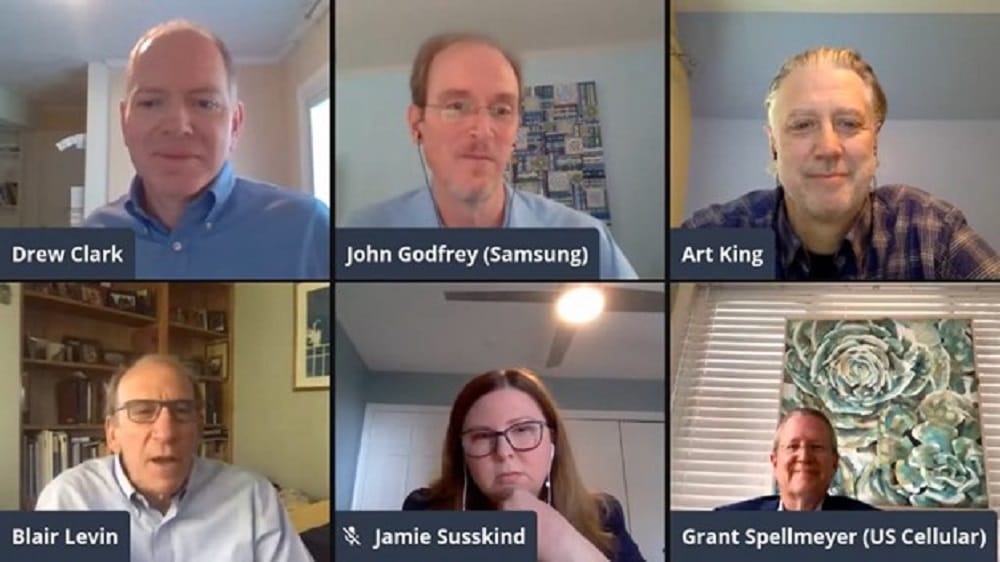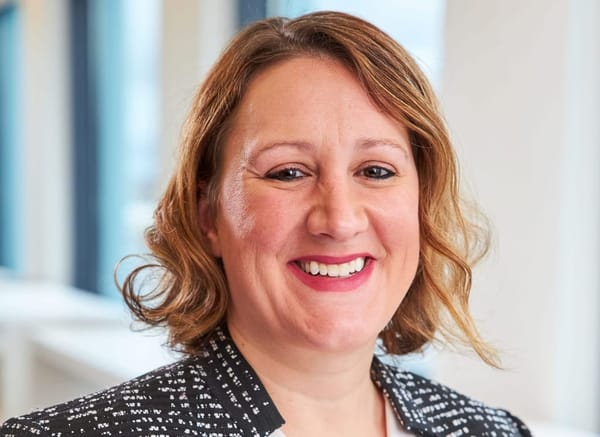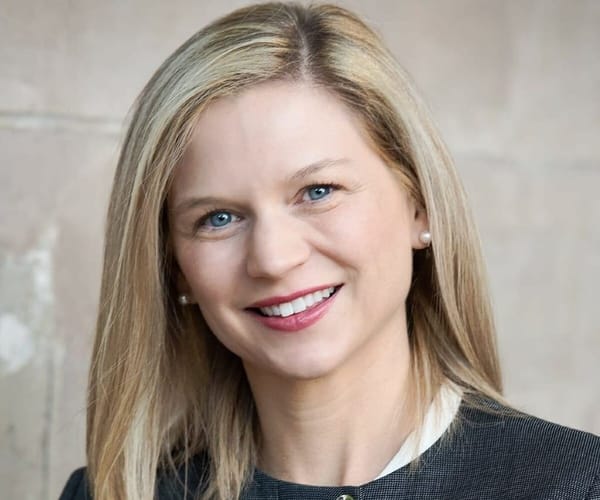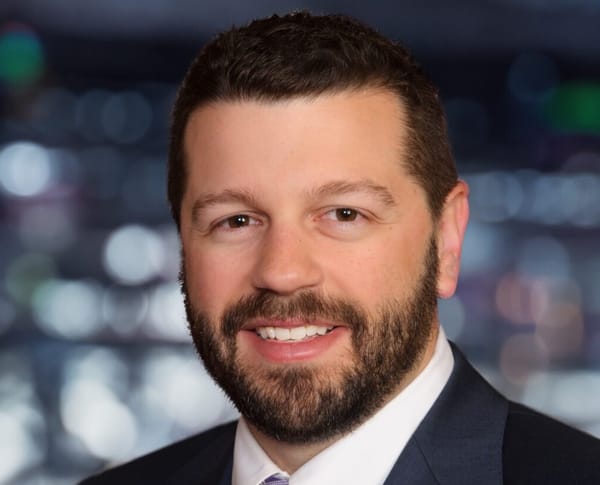‘A No-Nonsense Guide to 5G’ Kicks Off With Discussion About Spectrum, Rights of Way and Wall Street
November 2, 2020 – Issues about radio frequency spectrum, municipal rights-of-way, national security and trusted partners were among the topics addressed during the October 14 kickoff event of Broadband Breakfast’s “A No Nonsense Guide to 5G.” The event, the first of five events in a new Broadband B

November 2, 2020 – Issues about radio frequency spectrum, municipal rights-of-way, national security and trusted partners were among the topics addressed during the October 14 kickoff event of Broadband Breakfast’s “A No Nonsense Guide to 5G.”
The event, the first of five events in a new Broadband Breakfast Live Online series sponsored by Samsung Electronics America, framed the discussion of the topic with experts including Blair Levin, former director of the Federal Communications Commission’s National Broadband Plan under President Barack Obama; John Godfrey, senior vice president of public policy for Samsung; Grant Spellmeyer, vice president of federal affairs US Cellular; Jamie Susskind, vice president of policy and regulatory affairs for the Consumer Technology Association; and Art King, director of enterprise services at Corning Optical Communication.
From a business and consumer perspective, mused Levin, one of the biggest obstacle to expanded 5G deployment is consumers’ unwillingness to pay more for benefits that have not been clearly described.
Levin, who is nonresident senior fellow with the Brookings Institution, said he disagreed with the theory that if you drive down the price of deployment in San Jose, you’ll get deployment in Montana. “No one on Wall Street believes that,” explained Levin, who spent a lot of his career as a Wall Street analyst.
Verizon, Levin said, recently said it would drop the extra $10 they were charging for 5G plans. Levin assumed that this was because people weren’t willing to pay. When there’s a new capital expenditure without an increasing average revenue per user, that’s a problem for Wall Street investors, he said.
That’s why to providers need to provide greater clarity on what the return on investment will be.
Levin further claimed that the FCC’s approach to improving 5G infrastructure siting involved simply a transference of wealth from cities to private sector companies who have no obligation to deploy anywhere. He argued that this made cities the enemy and slowed rather than accelerating deployment.
Spellmeyer agreed with Levin in that making enemies with municipalities wasn’t a good long-term strategy. But he also said that even if the cost were spread among consumers that there would still need to be tremendous investments in advanced networks over time.
By contrast, South Korea has experienced widespread deployment in spite of 5G being made more expensive, noted Godfrey, of Samsung. He also said that enterprise applications of 5G are likely to open significant new revenue sources, including machine-to-machine communications over networks, and with enterprises paying for managed network services.
Perspectives on the universal service fund and licensed versus unlicensed spectrum
Susskind of the Consumer Technology Association said that the FCC should make plans to wean recipients off of Universal Service Fund programs because it is not sustainable to have a 25 percent USF contribution factor.
On the other hand, CTA has been supportive of other creative solutions to close the digital divide, such as Amazon’s Kuiper project and the Microsoft “white spaces” project.

Panelists also discussed the wireless versus wireline debate, as well as the issues of both licensed and unlicensed spectrum. Godfrey said all were necessary.
He also suggested a 5G hype-busting test: When people talk about the benefits of 5G, are the things they’re talking about things that can just be done over Wi-Fi or do they need the unique capabilities of 5G for?
Said panelist Art King of Corning Optical Communication: “In general, operators are allergic to unlicensed spectrum.”
Spellmeyer agreed, projecting that licensed will be more important than unlicensed.
The event was moderated by Drew Clark, editor and publisher of Broadband Breakfast.

‘A No-Nonsense Guide to 5G’ sponsored by:

Events in “A No-Nonsense Guide to 5G” include:
- Wednesday, October 14, 2020, 12 Noon ET — “A No-Nonsense Guide to 5G: The Hype and the Reality of 5G”
- This opening panel will set the stage for Broadband Breakfast Live Online’s consideration of the policy, technology and practical questions around the 5G wireless standard. What is 5G, and why is there so much buzz about it? How much of an improvement is it over prior generations of wireless? In other words: What is real, and what is hype? How the issues of trusted partners, rights-of-way deployment, and spectrum policy interact? Where is 5G seeing early successes, and what are the stumbling blocks?”
- Wednesday, October 28, 2020, 12 Noon ET — “A No-Nonsense Guide to 5G: National Security and Trusted Partners”
- This panel will consider the global landscape for the 5G equipment ecosystem. It will consider issues in core networks, radio access networks and in handset equipment. How has the global landscape changed? Will 5G benefit from – or suffer because of – a new Cold War with China? How are American companies reacting to federal government initiatives for trusted partners? Where can the U.S. turn for solutions and alternatives to Chinese manufacturers?
- Wednesday, November 18, 2020, 12 Noon ET — “A No-Nonsense Guide to 5G: A Case Study of Transformative Apps in the Enterprise”
- 5G is seeing its first real successes in the enterprise marketplace. To glimpse the future more accurately, Broadband Breakfast Live Online will consider case studies of applications in enterprise environments. What technologies and processes bring 5G success to the business marketplace? What needs to happen to bring 5G successes to the consumer marketplace?
- Wednesday, December 9, 2020, 12 Noon ET — “A No-Nonsense Guide to 5G: Wireless Infrastructure, Municipal Rights-of-Way and the 5G Rural Fund”
- To realize the promise of 5G, far more base stations — wireless infrastructure facilities — will be necessary. 5G facilities and towers may not be as big as in previous generations of wireless technology. Still, the need for far more facilities has already created tensions with municipalities over rights-of-way. How can these conflicts be minimized? What are smart cities already doing to expedite wireless infrastructure deployment? Can the process be improved? Additionally, how will the FCC’s Rural Fund for 5G affect deployment?
- Wednesday, January 13, 2021, 12 Noon ET — “A No-Nonsense Guide to 5G: Spectrum Policies to Advance Better Broadband”
- More than simply the next generation of wireless technology, 5G deployments make use of radio frequencies from an extremely wide range. For example, some 5G deployment are using mid-band spectrum between 3.4 GigaHertz (GHz) and 6 GHz. But 5G networks also promise tap into spectrum between 24 GHz and 100 GHz. It deploys these millimeter bands using network slicing and other advanced wireless tools. What new spectrum policies are necessary for 5G to flourish?








